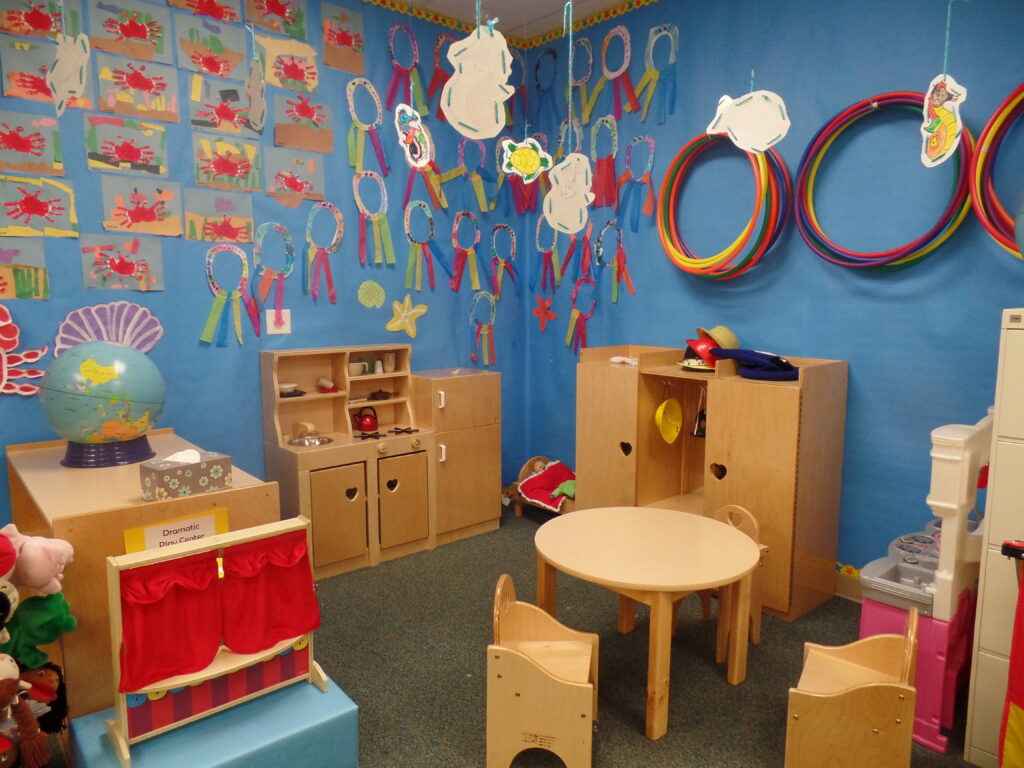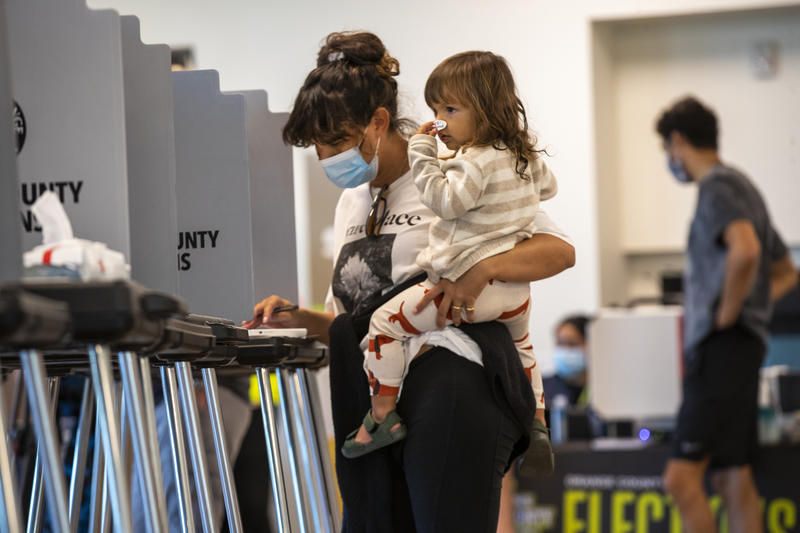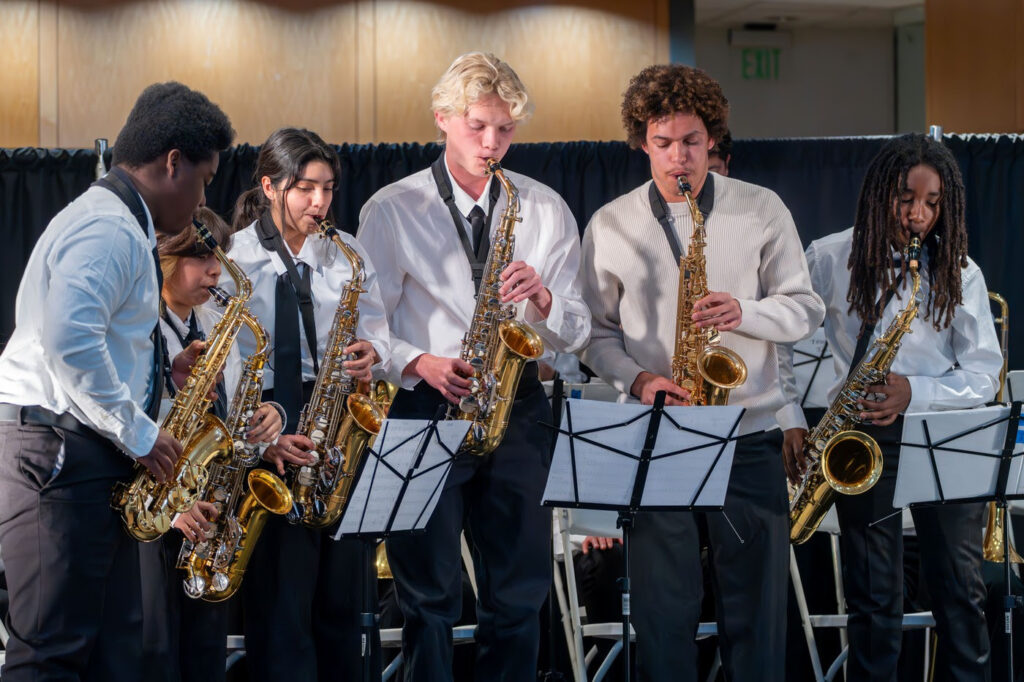
Credit: Sarah Tully/EdSource
This is the fourth in a series of stories on the challenges impacting California’s efforts to offer high-quality instruction to all 4-year-olds by 2025.
Transitional kindergarten for all 4-year-olds has been touted as a way to boost declining enrollment and offer universal preschool. One major roadblock: Some districts just don’t have the space.
Some districts do not have room to accommodate additional transitional kindergarten, or TK, classes at all schools. Others, especially those in less affluent areas, lack the resources to add toilets and playground equipment made for 4-year-olds. A lack of state funding makes the problem worse.
“We’re going to see inequitable outcomes as a result of the inequitable access to appropriate facilities for transitional kindergarten,” said Jessica Sawko, education director at Children Now, an advocacy organization. “The state needs to continue to invest in the facilities that it has asked school districts to create.”
Some districts, such as Oakland Unified, are losing potential TK students because they don’t have space at all schools. Some elementary schools in Oakland don’t have any TK classrooms, and many have only one. As a result, some children end up on waitlists for their preferred school, and families are opting to wait until kindergarten to enroll their children.
Oakland district spokesperson John Sasaki acknowledged in an email that “there is a general capacity issue as we build out TK-appropriate classroom spaces,” noting that demand also varies between schools.
“School A may have 100 applications for 24 seats and school B may have 15 applications for 24 seats. Those families for school A may not go to school B because it’s far away, etc. and so it’s less that we weren’t able to accommodate, and more about family choice and preference,” Sasaki wrote.
Emily Privot McNamara applied for her 4-year-old son to attend transitional kindergarten in Oakland as soon as the district opened enrollment in 2023.
She was hoping for her son to attend his neighborhood school, Montclair Elementary, less than a two-minute drive from their house. Her neighbors told her getting into Montclair for kindergarten was easy for their children, since the district gives priority to students who live in the neighborhood.
But getting into TK there was different. Montclair has far fewer TK classrooms than kindergarten classrooms; in 2023-24 the school enrolled 28 students in TK, compared to 90 in kindergarten. McNamara’s son didn’t get into Montclair or Thornhill Elementary, another nearby school. Instead, the district offered him a seat at Emerson Elementary, more than 3 miles from their house and a 10-minute drive each way.
The McNamaras considered sending their son to Emerson for TK and then moving him to Montclair for kindergarten, but felt that would be too many transitions.
“We’d had several years of shifts and changes. We wanted to start consistency. The idea was once we got into TK, we could stay there a number of years,” McNamara said.
So the McNamaras declined the spot at Emerson and kept their son in private preschool, paying $1,900 a month for tuition. They stayed on the waitlist for Montclair but were never admitted.
McNamara’s son is one of 143 children who applied to transitional kindergarten in Oakland Unified in 2023-24 but ultimately chose not to enroll, according to Sasaki. That number is equivalent to about 12% of the district’s total transitional kindergarten enrollment that year.
TK enrollment has been lower than expected statewide. According to the California Department of Education, 151,491 students were enrolled in TK in the 2023-24 school year, far below projections. The Learning Policy Institute had estimated that between 159,500 and 199,400 would enroll.
A lot of districts, on paper, they’re under-enrolled. However, the devil’s in the details. … Is there potential extra space where it’s actually needed? And what’s the condition and quality of those spaces?”
Jeff Vincent, Center for Cities+Schools
Oakland Unified and Alum Rock Unified in San Jose are both trying to use empty space creatively, revamping previously closed elementary school campuses and converting them into early childhood centers to serve both TK and younger students in preschool. Oakland gives priority at this center and another early childhood center to students who come from neighborhoods with schools that don’t have a single transitional kindergarten classroom. Yet the situation in Oakland, where some schools are under-enrolled, while others have waitlists, shows that expanding TK is more complicated than simply filling empty classrooms with 4-year-olds, said Jeff Vincent, who co-directs the Center for Cities + Schools at UC Berkeley and has done extensive research on school facilities.
“A lot of districts, on paper, they’re under-enrolled,” said Vincent. “However, the devil’s in the details on that, right? Is there potential extra space where it’s actually needed? And what’s the condition and quality of those spaces, and what would it take to turn them into TK-appropriate classrooms?”
A problem statewide
According to a February 2023 Legislative Analyst’s Office (LAO) budget brief, 25% of districts said they did not have adequate classroom space to meet projected transitional kindergarten enrollment. Similarly, a survey conducted by the California Department of Education and analyzed by the Learning Policy Institute found that 18% of school districts did not have enough classroom space for transitional kindergarten expansion, and more than a third cited facilities as the biggest challenge.
That report found that school districts will need 946 additional classrooms to enroll all projected transitional kindergarten students in 2025-26. TK has been gradually expanding since 2022 to reach all the state’s 4-year-olds by the 2025-26 school year.
One of the challenges for districts is the requirement for transitional kindergarten classrooms.
State guidelines for TK and kindergarten classrooms are more stringent than for classrooms for older children. New classrooms must include bathrooms with toilets sized for young children, and be at least 1,350 square feet. Renovated classrooms must be at least 1,250 square feet. In contrast, classrooms for grades 1-12 must be at least 960 square feet.
Victoria Wang, one of the authors of the report, said some districts told the Learning Policy Institute that the lack of classrooms has made it difficult to offer full-day TK and that they are instead offering half-day morning and afternoon TK sessions in the same classrooms, in order to accommodate more students. Parents who need a longer program to meet their child care needs are unlikely to enroll in half-day TK.
Many districts cited not being able to provide bathrooms connected to classrooms as a challenge.
“If they don’t have a bathroom that’s in the actual classroom space, a staff member will need to walk with the child to go to the bathroom,” Wang said. “That’s just an additional layer of challenge staffing-wise.”
In San Juan Unified, near Sacramento, lack of classrooms “has been a concern,” said spokesperson Raj Rai. In 2023-24, 16 of the district’s 28 transitional kindergarten classrooms had waitlists, and about 249 students who applied eventually declined to enroll in TK at the schools where they were assigned, she said. The district has been offering spots in state-subsidized preschool to some families on the waitlist.
San Diego Unified and San Francisco Unified also had waitlists at some schools, but they would not share how many of the children who applied did not enroll.
Some districts that wanted to expand to more 4-year-olds faster than the state’s phased timeline for TK expansion could not because of facilities constraints, Wang said. The state required schools to offer TK to all 4-year-olds who would turn 5 before April 2 in 2023-24, and to all 4-year-olds who would turn 5 before June 2 in 2024-25, but districts could enroll younger children if they had room and met stricter rules: a 1:10 adult-child ratio and a maximum class size of 20.
A spokesperson for Garden Grove Unified in Orange County said the district had to place 84 children who were younger than the TK birthday cutoff on a waitlist this year; 25 had been pulled from the list as of mid-September.
Inequitable access to funding
Districts are often forced to choose between renovating current classrooms, demolishing, then reconstructing new transitional kindergarten classrooms, or purchasing portables, said John Rodriguez, facilities planning director for Central Unified, a 16,000-student district in Fresno County.
“What do you do when there’s growth?” he said. “And where’s the money going to come from?”
This year, overall facilities funding was cut by $500 million to address the budget shortfall, and funding set aside for transitional kindergarten facilities has run out. The state had provided $490 million in grants to construct or retrofit early education facilities, including for TK, in 2021-22 and $100 million in 2022-23, but that funding was “oversubscribed,” the LAO budget brief found. Additional promised funding of $550 million for TK facilities was first delayed to 2024-25, then to 2025-26, and ultimately was eliminated from the budget altogether.
“It puts at risk the ability for school districts who do not currently have the right facilities to provide those proper learning environments,” Sawko, from Children Now, said.
California voters will be able to vote in November on $40 billion in local construction bonds and on a $10 billion statewide bond to put toward facilities, but none of those funds would be exclusively for transitional kindergarten. Because districts are also struggling to meet facilities needs such as outdated or deteriorating buildings, TK may not take priority.
The ability to build new classrooms or renovate old ones is often tied to a district’s property wealth, said Sara Hinkley, California program manager for the Center for Cities + Schools at UC Berkeley.
“The only way for districts to do real facility upgrades, like adding bathrooms and reconfiguring a number of classrooms, is by getting capital funding, which means going to their voters or tapping into an existing bond measure, and districts have really different capacities to do that,” said Hinkley. “If they have less property wealth, they just have less ability to tap their voters to pay for those kinds of things.”
Julie Boesch, the administrator for small school district support in Kern County, said some of the county’s small districts don’t have the classrooms to serve transitional kindergartners at all sites, so they bus them all to one school, sometimes far from home. Other superintendents have said they may not offer transitional kindergarten at all, she said.
She said one small school district north of Bakersfield is constructing a new building for transitional kindergarten but could not afford a new playground. Another district was approved for some state funding for a new TK building but had to put it off because it could not afford its portion. The district did not qualify for the state to pay the full share because its total assessed property value was just over the current $5 million limit. That limit for a district to qualify for full financial help would be increased to $15 million in assessed property value if voters pass Proposition 2, the state construction bond.
“People are really struggling with figuring out what to do and having enough money when they do get funding,” Boesch said. “The frustrations are real.”
Winters Joint Unified School District, a small district serving about 1,500 students in Yolo County in the Central Valley, had to divert funds planned for other facilities to meet the urgent demand for TK classroom space. According to Superintendent Rody Boonchouy, voters passed a bond measure in 2020 to address major maintenance issues, including adding a multipurpose room to an elementary school. But then, Gov. Gavin Newsom signed legislation to expand TK to all 4-year-olds.
“It was a big, ‘Uh oh, what do we do?’ Everything came to a halt and everything shifted toward, ‘How do we ensure we have capacity for TK as it expands?’” Boonchouy said.
After a long process that included a demographic study and analysis of all facilities needs, the district is using some of the bond money to build four transitional kindergarten classrooms in a dedicated wing of the elementary school, with its own playground. The district was also able to do some maintenance at other schools, but it no longer has funds for the planned multipurpose room.
Without that bond money, the district wouldn’t be able to build new TK classrooms at all, a situation Boonchouy knows many other districts face.
“Ideally, in a perfect world,” Boonchouy said, “that legislation (expanding transitional kindergarten) would have come with money to build facilities for it.”
















